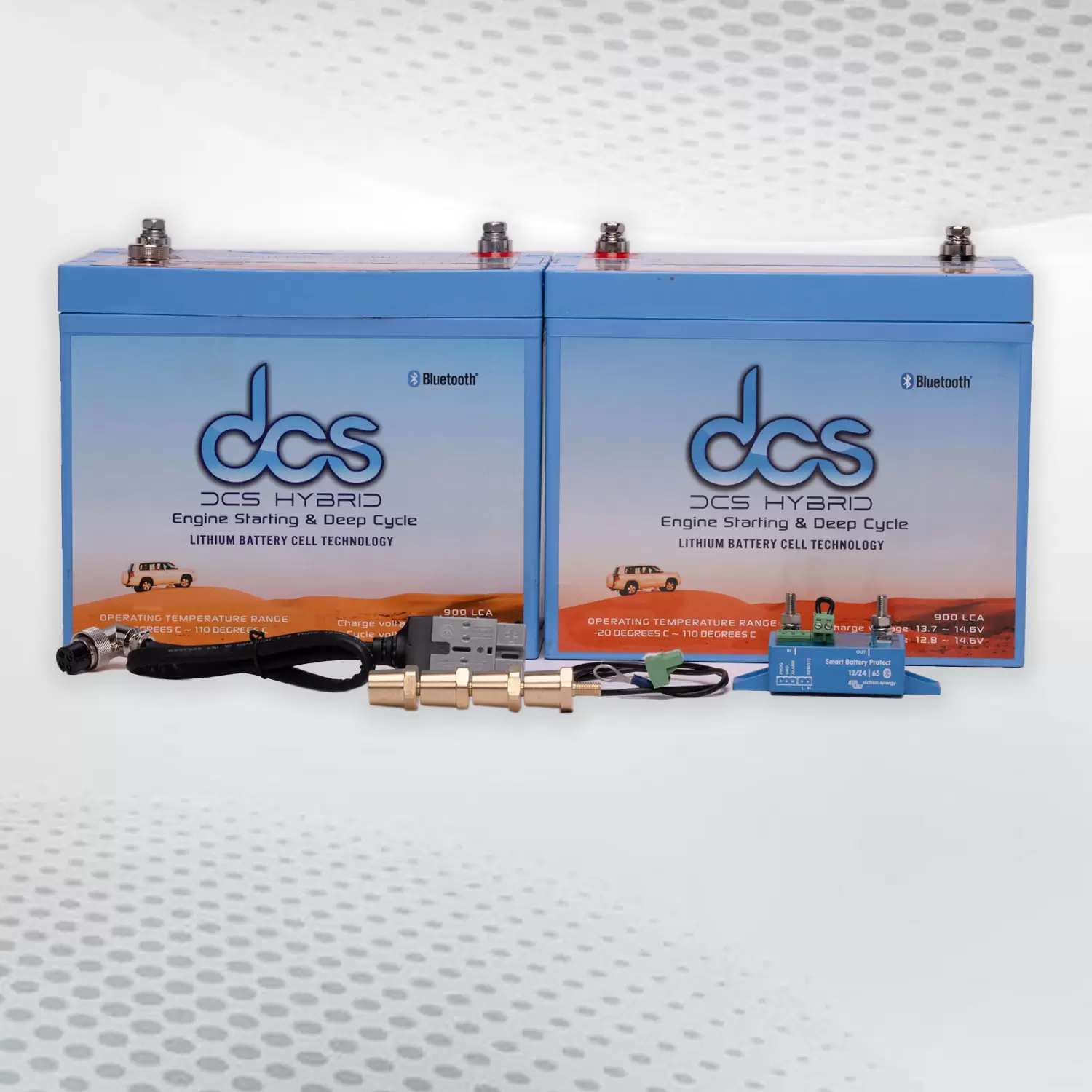Unleash Your Devices’ Potential: The Lithium Ion Battery

In today’s world, our devices have become an essential part of our daily lives. From smartphones and laptops to electric cars, these gadgets rely on a powerful and reliable source of energy to function efficiently. That’s where the lithium ion battery comes in. This advanced technology has revolutionized the way we power our devices, offering a multitude of benefits that make it the go-to choice for manufacturers. Because of lithium-ion batteries, your gadgets are slim, lightweight, and high-performing.
The High Energy Density of Lithium Ion Battery Pack
One of the standout features of lithium-ion batteries is their high energy density. What does that mean, you ask? Energy density is the amount of energy that a battery can store for a given weight or volume. In simpler terms, it’s the ‘oomph’ your battery packs in its small frame. A high energy density means your lithium ion battery pack can hold a lot of energy without bulking up.
It’s like a super-compact, high-powered fuel tank for your device. This is a big part of why your smartphone or laptop can do so much while staying slim and lightweight. Why does this matter? Think about it. You want your phone to last the whole day without charging, right? You want your laptop to stay alive through a cross-country flight. Maybe you want your electric car to travel hundreds of miles on a single charge. For all these scenarios, you need a battery with high energy density.
Lithium-ion batteries deliver exactly that. They store more energy than any other type of rechargeable battery of the same size. This means your devices can operate longer between charges. This is particularly significant for electric cars, where high energy density equals greater range.
Furthermore, high energy density enables the development of smaller, lighter devices. Think about the evolution of the mobile phone. We’ve come a long way from the brick-like mobile phones of the ’80s, and lithium-ion batteries have played a key role in this miniaturization. They’ve powered the design of sleek, slim, and powerful devices we use today.
The Low Maintenance of Lithium-Ion Batteries
Ease and convenience are two things we all love in our fast-paced lives. We want things that make our lives simpler, not complicated. This is where lithium-ion batteries step in, meeting our need for simplicity and efficiency. What makes them so appealing? The answer lies in their low maintenance.
When we talk about battery maintenance, we’re usually referring to the tedious task of regular discharging to keep the battery in its optimal state. This was a common scenario with many older battery technologies, which would suffer from a “memory effect,” reducing their efficiency if not periodically fully discharged and recharged. But guess what? With lithium-ion batteries, that’s a thing of the past!
The beauty of lithium-ion batteries lies in the fact that they require minimal upkeep. They are free from the burden of the memory effect. This means you can charge them anytime, anywhere, without worrying about needing to drain them completely first. Need a quick power boost before heading out? Go for it! Your lithium-ion battery won’t hold a grudge.
This advantage not only frees you from the constraints of strict charging routines but also enhances the battery’s longevity. You’re able to maintain the battery’s performance over time, without the worry of the battery losing its maximum charge capacity due to irregular charging habits. This convenience factor is one of the many reasons why lithium-ion batteries have become a staple in our everyday gadgets.
The simplicity doesn’t stop there. Lithium-ion batteries are designed to withstand hundreds of charge and discharge cycles. They continue to provide reliable power even after extended use. They save you the trouble of frequent replacements, another win for our busy lives!
The Rapid Charging Times of Lithium-Ion Batteries
Let’s delve into another marvel of lithium-ion batteries – their astonishingly swift charging capabilities. Gone are the days when charging your gadgets was a prolonged affair. Today, the rapid charging times of lithium-ion batteries have dramatically slashed the downtime of your devices. This means more time in your hands to utilize your technology and less time spent watching that charging icon.
The remarkable speed at which lithium-ion batteries can be recharged is a significant advantage, especially in today’s fast-paced world where every minute counts. Whether it’s a mid-day recharge for your smartphone, a quick battery boost for your laptop during a layover, or overnight charging for your electric vehicle – lithium-ion batteries can get back to full power in a jiffy.
Let’s put this into perspective: Lithium-ion batteries can recharge significantly faster than their conventional counterparts. Take electric vehicles, for example. A conventional battery could take up to 10-12 hours to fully charge.
In contrast, a lithium-ion battery can recharge in just a few hours. This, combined with their high energy density, means your electric vehicle can go further and charge faster – a key factor making electric vehicles an increasingly popular choice.
Remember how we talked about high energy density making our devices lighter and slimmer? Well, rapid charging times complement this feature by ensuring these sleek devices are not just aesthetically pleasing, but are always ready for action. They offer the perfect balance – power-packed performance and quick refueling.
Lithium Battery Pack Provides a Higher Power Output
If you’re intrigued by the robust capabilities of lithium-ion batteries, then you’ll be fascinated by what a lithium battery pack brings to the table. Lithium packs are essentially a collection of lithium-ion cells bundled together to provide a higher power output. They harness the power of multiple cells to deliver energy more efficiently to larger and more power-intensive devices.
These power-packing ensemble are popular in electric vehicles, power tools, and even some high-performance laptops. The reason? Their ability to unleash substantial power while still maintaining the many benefits of individual lithium-ion cells.
Imagine a choir, where each singer contributes to the overall performance. Similarly, in a lithium pack, each lithium-ion cell works in harmony to boost the power output. This synergy results in increased energy capacity, translating into extended runtime for power-hungry devices.
Additionally, these packs are built with dedicated protection circuits for each cell. This means they inherit the safety features of individual lithium-ion batteries, and take it a step further by protecting the entire pack from overcharge, deep discharge, and short circuit scenarios.
Eco-Friendly Lithium-Ion Batteries
As we revel in the power-packed performance of lithium-ion batteries, let’s take a moment to applaud their green credentials too. Yes, you heard it right! Lithium-ion batteries are more than just power performers; they are environmental stewards as well. Unlike some of their traditional counterparts that house harmful elements like cadmium and lead, lithium-ion batteries are free of these toxic substances.
This absence of harmful chemicals underscores the environmentally friendly nature of these powerhouses. It makes disposal less hazardous, ensuring that even when their service life ends, they don’t leave a damaging legacy. This is a considerable advantage considering our increasing dependency on battery-powered devices and the consequent rise in battery waste.
But the eco-friendliness of lithium-ion batteries doesn’t stop at their chemical composition. Their impressive longevity plays a crucial role too. Remember the long-lasting power we raved about earlier? That means fewer batteries are discarded over time, reducing the pile-up in landfills. Fewer replacements mean less manufacturing, which translates into lower energy consumption and less CO2 emissions.
Optimal Temperature Range for Lithium-Ion Batteries
Have you ever wondered why your smartphone seems to drain faster in extremely cold or hot conditions? Or why your electric vehicle doesn’t go quite as far on a single charge during a heatwave or snowstorm? The answer lies in the optimal temperature range for lithium-ion batteries.
Just like Goldilocks in the fairy tale, lithium-ion batteries prefer their conditions to be “just right” – not too hot, not too cold, but just right. That’s right, room temperature, or approximately between 20°C to 25°C (68°F to 77°F), is where these batteries perform at their peak. In this range, lithium-ion batteries can store and deliver energy most effectively, powering your devices to their fullest potential.
When temperatures stray too far from this optimal range, you may notice that the performance of your battery-powered devices isn’t quite up to snuff. At extremely low temperatures, the chemical reactions inside the battery slow down, leading to reduced capacity. This can result in shorter run times between charges.
On the flip side, high temperatures can cause lithium-ion batteries to degrade faster than usual. This means they may not hold their charge as well over time, ultimately reducing the overall lifespan of the battery.
Revolutionary Lithium-Ion Battery Tech
Buckle up as we take a ride into the future of lithium-ion battery technology. As astonishing as today’s lithium-ion batteries may be, researchers and innovators worldwide are continuously pushing the boundaries, unlocking new frontiers of performance, efficiency, and reliability. This quest for progress is yielding some truly game-changing technologies.
Imagine a lithium-ion battery with even higher energy density, allowing your electric vehicle to drive further on a single charge, or your smartphone to last for days without needing a recharge. Solid-state lithium-ion batteries are turning this dream into a reality. By replacing the liquid electrolyte with a solid one, they are poised to deliver higher energy density, increased safety, and longer lifespan.
Now, let’s talk charging times. The rapid charging capabilities of current lithium-ion batteries already seem impressive, right? But what if you could fully recharge your electric vehicle while you sip your morning coffee? Or give your smartphone a full day’s charge in a matter of minutes? That’s the kind of revolutionary speed that next-gen lithium-ion technologies are striving for.
FAQS
How Safe Are Lithium-Ion Batteries?
While any power source has potential risks, rest assured that lithium-ion batteries are generally very safe. They come with built-in safety measures, such as protective circuits and voltage limiters. Plus, ongoing research is further enhancing their safety features.
Why Do Lithium-Ion Batteries Degrade Over Time?
The answer lies in the unavoidable wear and tear from charge and discharge cycles. Each cycle induces small chemical changes, eventually leading to a decrease in capacity. However, remember that lithium-ion batteries can handle hundreds of cycles before any noticeable decline!
Can I Replace The Lithium-Ion Battery In My Device?
It really depends on the design of the device. While some gadgets have user-replaceable batteries, others may require professional replacement services. Always check with the manufacturer’s guidelines to avoid any mishaps.
Conclusion
A Lithium ion battery has truly taken center stage in our technology-driven era. They empower our devices, from the palm-sized smartphones to high-powered electric vehicles, and everything in between. The superior energy density, rapid charging capabilities, and low-maintenance characteristics of these batteries have made them a staple in modern technology. But that’s not all. These powerhouses bring more to the table. They offer long-lasting reliability and an eco-friendly footprint, making them an ideal power source for the 21st century.



